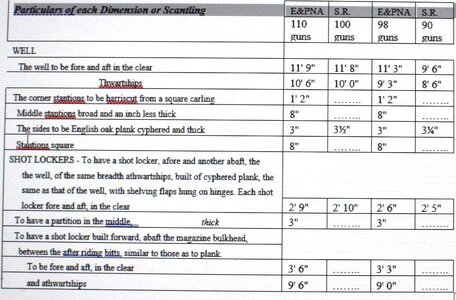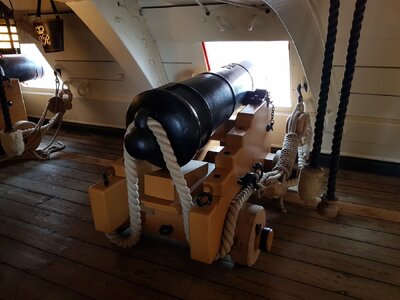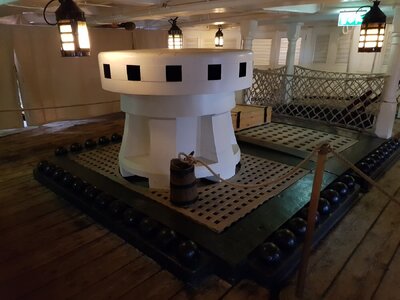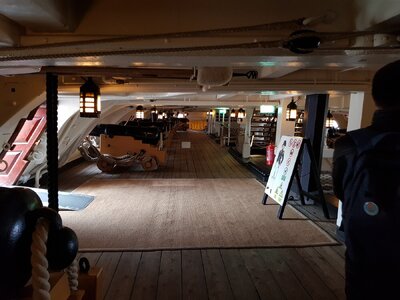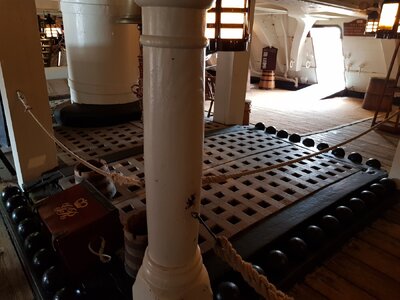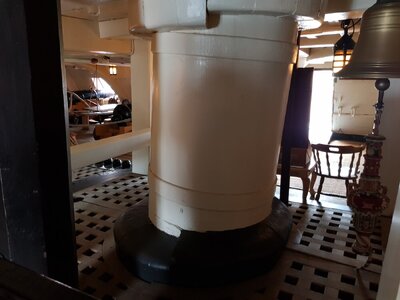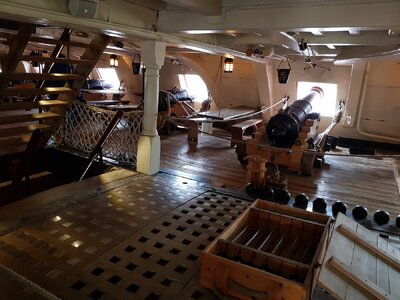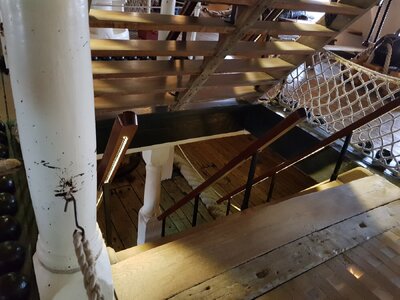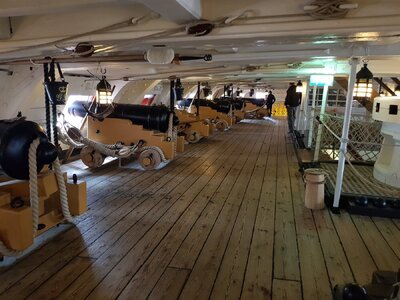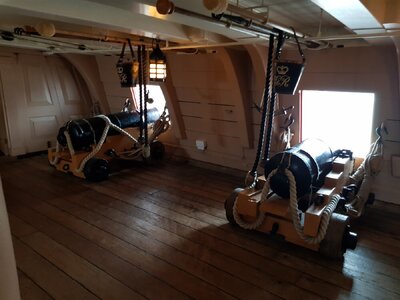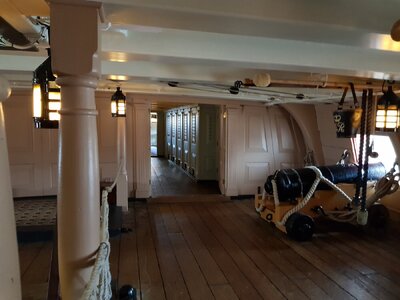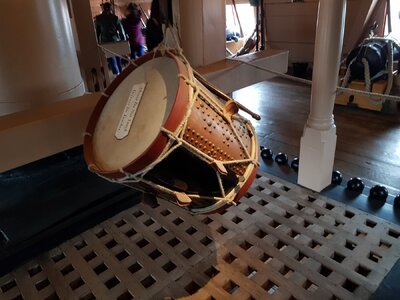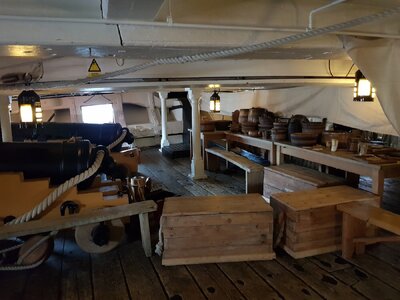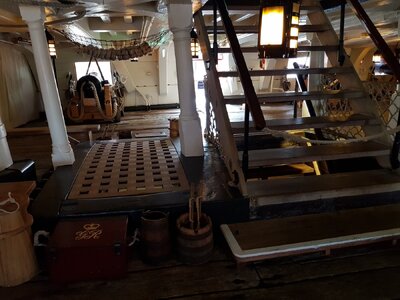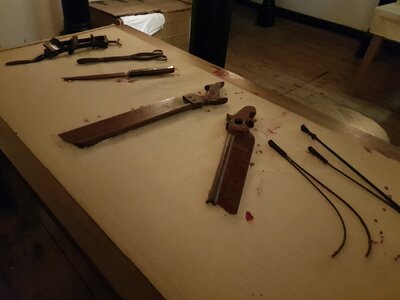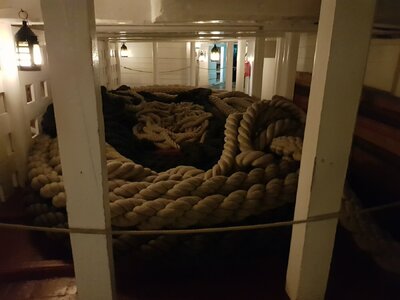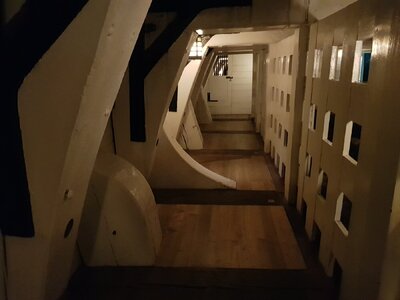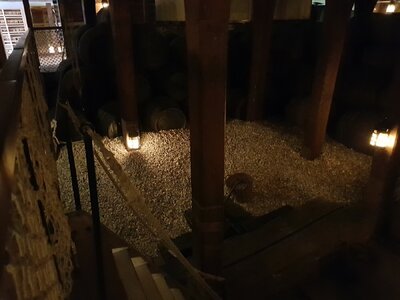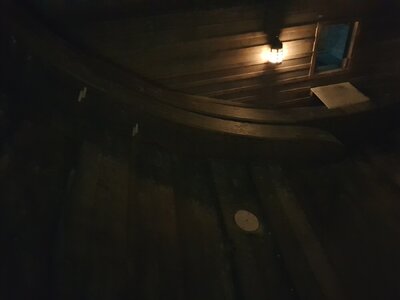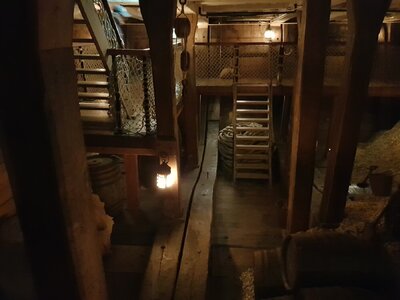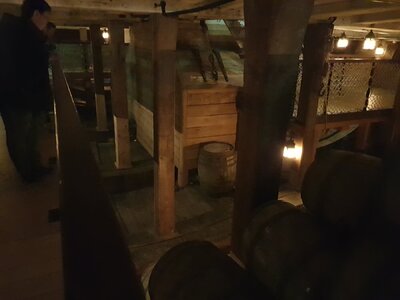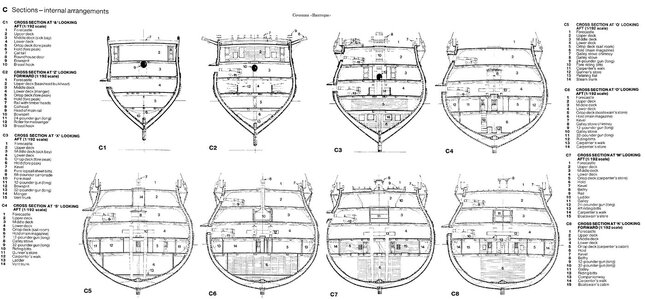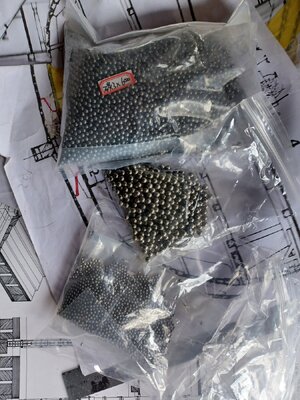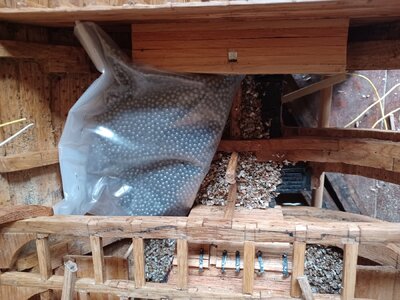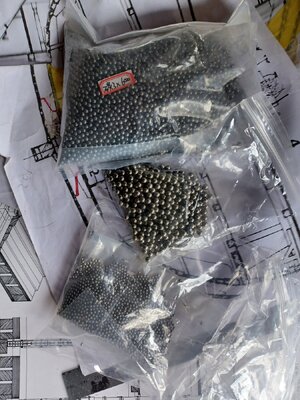- Joined
- Oct 31, 2020
- Messages
- 9
- Points
- 3

Hi, I'm part way through (Yes yet another one!) scratch built HMS Victory as she was originally launched (Plan to do a build log soon as 3.5 years so far and counting).
I'm using the usual trench of reference books as others and studied others build logs, I've got some cut out sections in the hull on one side so you can see the internal details and the intention is to use the same materials, joint locations etc as the original ship was (accepting that grain size issues etc are an issue).
I'm currently building the hold details and the Orlop deck structure and started some of the Orlop planking so before I get ahead of myself too far I'm hoping some of =you kind folk out there may be able to assist in clearing up some issues I'm encountering.
The ships inventory states something like 10,000 shot were stored for the cannons (I'm vague as I think it related to weight rather than quantity), there are around 500 shot stored for immediate use around the firing decks and there is a single shot locker in the hold, which I'd be surprised if it was just dropped in shot rather than stored on shelving but that aside, I'd guess around another 500 shot stored in there, so where were the other 9000 cannon balls stored as I can't find any info in books or online?
My other questions relate to the deck planking - the books state the lower decks planks were originally of pine due to a shortage of Oak, but is vague so would that have been all the lower (ie not exposed to the elements) decks or just the Orlop deck given the movement of the cannons would surely have caused wear in pine planking?
Also if the planking was pine and the frames beneath of oak would the trenails have been pine/ oak or some other material (I've been making own 'dowels' and drilling / gluing rather than using lead pencil for the hull planking for trenails- was a lot of work but worth the effort and plan to continue same for the deck planking ?
And finally I see there are metal fixings to the side of the knees, I'm guessing these were added at a later date or were they fitted at the first launch of the ship.
Appreciate any assistance on these question someone can provide.
Vince Williams
I'm using the usual trench of reference books as others and studied others build logs, I've got some cut out sections in the hull on one side so you can see the internal details and the intention is to use the same materials, joint locations etc as the original ship was (accepting that grain size issues etc are an issue).
I'm currently building the hold details and the Orlop deck structure and started some of the Orlop planking so before I get ahead of myself too far I'm hoping some of =you kind folk out there may be able to assist in clearing up some issues I'm encountering.
The ships inventory states something like 10,000 shot were stored for the cannons (I'm vague as I think it related to weight rather than quantity), there are around 500 shot stored for immediate use around the firing decks and there is a single shot locker in the hold, which I'd be surprised if it was just dropped in shot rather than stored on shelving but that aside, I'd guess around another 500 shot stored in there, so where were the other 9000 cannon balls stored as I can't find any info in books or online?
My other questions relate to the deck planking - the books state the lower decks planks were originally of pine due to a shortage of Oak, but is vague so would that have been all the lower (ie not exposed to the elements) decks or just the Orlop deck given the movement of the cannons would surely have caused wear in pine planking?
Also if the planking was pine and the frames beneath of oak would the trenails have been pine/ oak or some other material (I've been making own 'dowels' and drilling / gluing rather than using lead pencil for the hull planking for trenails- was a lot of work but worth the effort and plan to continue same for the deck planking ?
And finally I see there are metal fixings to the side of the knees, I'm guessing these were added at a later date or were they fitted at the first launch of the ship.
Appreciate any assistance on these question someone can provide.
Vince Williams




